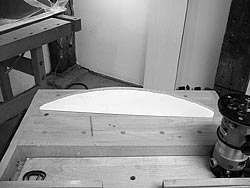Repairing Delaminating Edgebanding
Advice on how to deal with 3mm edgebanding that won't stay down. November 24, 2007
Question
We have a small job that requires 3mm to be banded to a 1 1/8" particleboard top with HPL on both sides. The band runs 360 degrees around the top. What is the best glue to use if we don't have a hot melt contour edgebander? It was glued with contact cement and we are having problems with the joint opening up between the particleboard core and 3mm. (Not complete failure yet with band on floor.) It's my opinion it should have been a more rigid glue than contact. I'm faced with trying to fix this, preferably on site, or yanking tops and redoing. Any input is appreciated!
Forum Responses
(Adhesive Forum)
From contributor A:
I use contact cement for all of my 3mm banding and have never had a problem. I don't mean to offend, but I think the culprit is either technique or contact cement (i.e. not a high enough solids content).
From the original questioner:
Do you think that the glue can be reactivated by heat gun? I was told that they put on three coats prior to applying. Or is there another adhesive that can be used to fix on the spot? I'm trying to avoid a lot of client down time and inconvenience.
From contributor A:
No, you can't reactivate the glue with heat. If the gap is along the outsides edges, fix it by making it worse. Run a putty knife along the edge to open it up a little bit more, assuming the gap is already pretty small. Then fill the gap with glue - white or yellow is fine. Then take packing tape or just masking tape and stretch it tight to close the gap. You will have to carefully scrape along the edge to clean the glue off once dry, but it is a necessary evil. You may be able to use a cyanoacrylate glue to speed up the process, but you'll have a shorter open working time and it is harder to clean off. Besides, the white or yellow glue will give you plenty of holding power. If the 3mm is on a curve, using a heat gun to soften it up as you put the tape on is not a waste of time. A second pair of hands helps. As far as putting three coats on, that is misleading. It all depends on the glue (i.e. the solids content). I spray one light coat on the particleboard to seal the wood. I then spray two light coats on the 3mm and two more light coats on the particleboard, alternating spray angle to ensure 100% coverage. I stress the word "light" - more is not better, but I doubt I have to tell anyone that. Make sure the solvent has flashed off and apply. Heat with a heat gun if going around curves and apply as much pressure as possible. Route and polish.
From contributor S:
Just a thought here. HPL is by nature fairly rigid, so if you are attempting to wrap it round a complete circle, you are probably experiencing the HPL equivalent of springback in bent/laminated wood pieces. Have you considered warming the HPL with a heat gun and partly pre-forming it to shape? I've done this successfully for a number of years on laminated kitchen worktops where I sometimes put a sort of ski-edge on the outside corners of tops rather than leaving a square edge with the obvious dangers of accident/injury. The other area where I've used this technique is in pre-forming 3mm ABS edging to go onto point of sale stands - in that case I've built heater jackets (low-voltage resistance heaters) to warm and pre-form the curve - a sort of heated caul. When the edges are applied using contact adhesive, there is a much reduced tendency for the edge banding to lift. Using this technique, there is a fine line between the point at which the laminate/ABS bends and the point at which it discolours. Finding that point takes a bit of experimentation.
